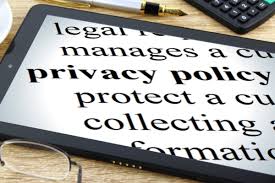Starting in Privacy

If somebody would ask you if you have read the privacy policy when you install an app in your smartphone or when you subscribe in a web page, probably your answer would be no. Aaron Smith in (Smith, 2014) reports a result from a poll in which 52% of polled people agree with the assertion “When a company posts a privacy policy, it ensures that the company keeps confidential all the information it collects on users.” Then, we can say that people have a misunderstanding about what a privacy policy means, and probably that is the reason they don´t read the privacy policy before installing an app or subscribing in a web page. Actually, the privacy policy stands how your data is going to be used, and it could include how it is going to be collected, saved, or transferred, and even though if it will be transferred to third parties.
A privacy policy is only a part of a big research field called Privacy, which is a concern of ICT (Information and Communication Technologies), law, humanities, and other fields. The term privacy is quite difficult to define (Finn, Wright, & Friedewald, 2013) and many authors give a set of definitions and thoughts , and in a brief way, I would say it is associated to your data, how it could be treated and who could access to it, all of it depending on a given context.
For further understanding in the importance of privacy you can read (Solove, 2007), the author shows how an argument like “I have nothing to hide” does not apply for each case. Basically, the most of people using this phrase is confusing or relating privacy and security. It means people use this phrase when they support the community’s security from attackers by using surveillance. In this case, it seems logic that community’s security is more important than privacy harms. But in other cases, when it is about a plurality of implications, the argument does not work. Would you permit any person or organization to access your data – when they have been obtained through capturing your messages – account numbers, credit cards, locations, health records and so on? Then, would you permit to transfer this information to others? In this situation, I would say no. But you should understand that in some cases, when you are going to receive a service, you would likely have to provide some of your data. For instance, if you are going to buy a television through Internet, you will have to provide data for the payment, billing and shipment; but for sure they will not need you health record id. Likewise, if you are taking an online-appointment to the hospital, maybe providing your identity card will be sufficient. It means that the data and permissions you grant depend on the context you are, it can be further studied in (Nissenbaum, 2004) where Nissenbaum explains its privacy model called Contextual Integrity, defined as compatibility between information appropriateness and distribution.
After realizing what privacy means and why it matters –so quickly-, you can think about how to protect it. Maybe, the first thing we think about is ciphering our data, but it is just a first step. Actually, privacy has some perspectives. Initially Clarke (Clarke, 1999) considered privacy of the person, privacy of personal behavior, privacy of personal communication and privacy of personal data. In (Finn et al., 2013) the authors extended Clarke’s notions and update privacy of personal behavior by privacy of behavior an action, privacy of personal data by privacy of data and image. Additionally, they add privacy of thoughts and feelings, privacy of location and space, and privacy of association.
Maybe the next questions would be:
Are there people working on these matters? What are they doing to help us protecting our privacy?
References
Clarke, R. (1999). Introduction to dataveillance and information privacy, and definitions of terms.Retrieved October 9, 2016, from http://rogerclarke.com/DV/Intro.html
Finn, R. L., Wright, D., & Friedewald, M. (2013). Seven Types of Privacy. In European Data Protection: Coming of Age (pp. 3–32). Dordrecht: Springer Netherlands. http://doi.org/10.1007/978-94-007-5170-5_1
Nissenbaum, H. (2004). Privacy as contextual integrity. Wash. L. Rev., 101–139. http://doi.org/10.1109/SP.2006.32
Smith, A. (2014). Half of online Americans don’t know what a privacy policy is. Retrieved October 9, 2016, from http://www.pewresearch.org/fact-tank/2014/12/04/half-of-americans-dont-know-what-a-privacy-policy-is/
Solove, D. J. (2007). “I”ve Got Nothing to Hide’ and Other Misunderstandings of Privacy. San Diego Law Review. http://doi.org/10.2139/ssrn.998565
About Julio César Caiza
Starting in the world of Privacy Research. PhD student at Universidad Politécnica de Madrid (SPAIN). Auxiliary Professor at Escuela Politécnica Nacional (ECUADOR).
- Web |
- More Posts(4)
![]() Starting in Privacy por jcaiza está licenciado bajo una Licencia Creative Commons Atribución-NoComercial-SinDerivar 4.0 Internacional.
Starting in Privacy por jcaiza está licenciado bajo una Licencia Creative Commons Atribución-NoComercial-SinDerivar 4.0 Internacional.

